Balancing Act: 5 Tips for Effective Balance Training in Your Facility
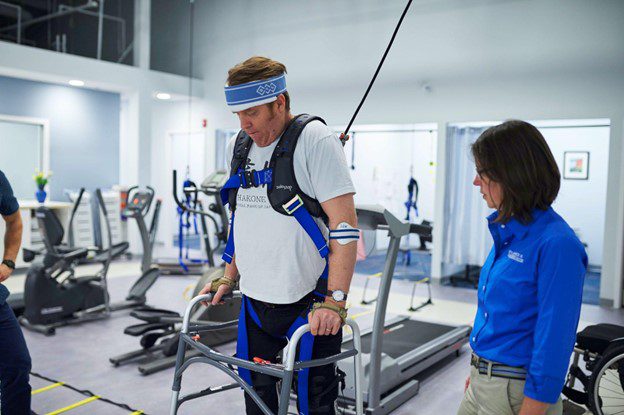
As a healthcare professional, you know that balance training is crucial for improving your patient’s overall strength, stability, and coordination. With so many different exercises, techniques and equipment available, it can be challenging to know where to start. That’s why we’ve put together this guide to help you achieve effective balance training in your facility. Whether you’re working with athletes, seniors, or anyone in between, these tips will help you create a safe, challenging and effective program that will help your patients improve balance and prevent injury. Let’s dive in and discover how to create the perfect balance training program for your facility!
Benefits of Balance Training
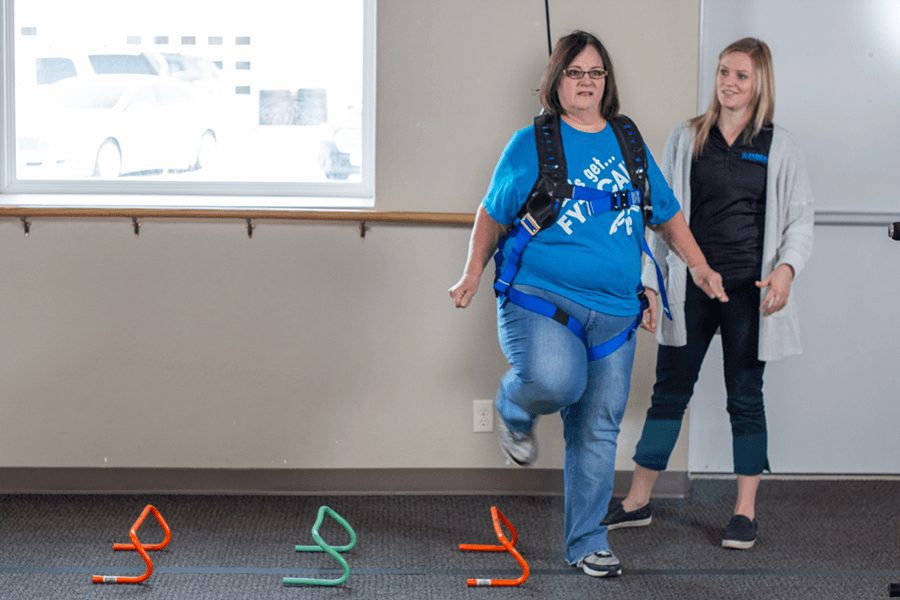
Before we dive into the tips for effective balance training, let’s discuss the benefits it provides! Balance is an essential component of fitness, and it’s often overlooked. Balance training can help improve posture, stability, and coordination, which all contribute to better overall health and fitness.
Balance training can also help prevent injury. As we age, our balance naturally declines, making us more susceptible to falls and injuries. By incorporating balance training into your fitness program, you can help prevent falls and other injuries.
Balance training is great for athletes, seniors, or anyone in between. By improving balance, your patients can improve their agility, reaction time, and more!
Common Balance Training Exercises
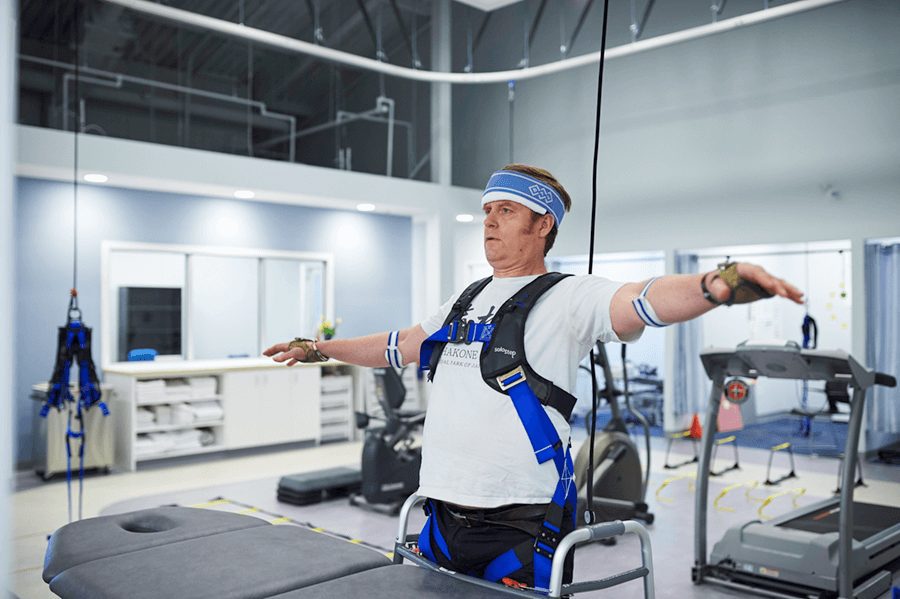
There are many different exercises and techniques that can be used for balance training. Some of the most common exercises include:
- Single-Leg Stance
- Heel-to-Toe Walk
- Side-Leg Lifts
- Balance Board/Stability Ball Exercises
- Yoga Poses
Remember to start slowly and gradually increase the difficulty of the exercises as your patients become more comfortable and stable.
5 Tips for Effective Balance Training in Your Facility
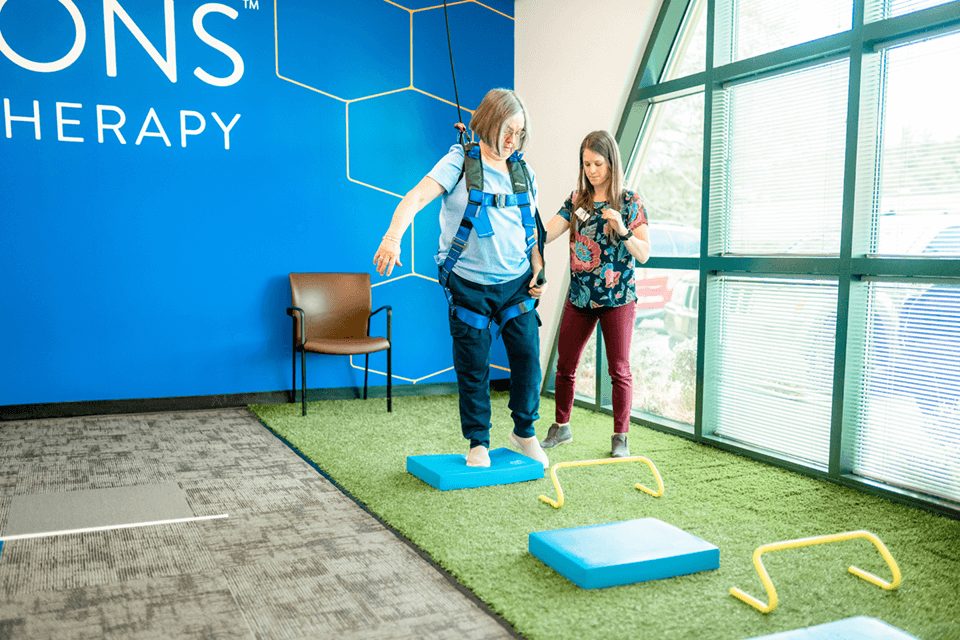
Now that we’ve covered the benefits of balance training and some common exercises, let’s dive into the five tips for effective balance training in your facility.
Tip 1: Start with a Balance Assessment
Before you start any balance training program, it’s crucial to assess your client’s current balance level. This will help you determine where to start and how to progress. There are many different ways to assess balance, but some of the most common include the single-leg stance test, the Berg Balance Scale, and the Functional Reach Test.
Single-Leg Stance Test– a simple assessment used to evaluate an individual’s ability to maintain balance on one leg. To perform this test:
- Find an open space and have the patient stand upright with their feet together and arms relaxed at their sides.
- Tell the patient to lift one foot off the ground, while bending their knee and raising their foot a few inches.
- The patient should focus on a stationary point in front of them to help maintain stability.
- Have the patient hold the position for as long as possible without touching the ground or losing balance.
- Repeat the test with the patient using their other leg.
The single-leg stance test can help identify any imbalances or weaknesses that may contribute to an increased risk of falls or injuries. The duration of the test varies depending on the purpose and the individual’s abilities. Generally, 30 seconds or more is considered good balance. However, this can vary depending on age, fitness level, and any underlying conditions.
Berg Balance Scale– a widely used critical assessment tool designed to measure balance and functional mobility in individuals with neurological or musculoskeletal conditions. This test can help healthcare providers evaluate a person’s ability to maintain balance and perform various functional tasks.
During this assessment, the patient will be asked to perform 14 different tasks that assess static and dynamic balance. Each task is scored on a 5-point scale ranging from 0 to 4, with 0 indicating the lowest level of balance ability and 4 indicating the highest level of performance. These tasks include:
- Sitting to standing
- Standing unsupported
- Sitting unsupported
- Transfers
- Standing to sitting
- Nudging
- Reaching forward with outstretched arms
- Retrieving an object from the floor
- Turning 360 degrees
- Placing alternate foot on a stool
- Standing with eyes closed
- Standing with feet together
- Standing on one leg
- Tandem standing
You can use this test to assess your patients balance and monitor changes in balance over time, track progress in rehabilitation, or identify areas of weakness that may require targeted interventions!
Functional Reach Test– this quick and simple screening tool can evaluate balance and fall risk in various populations, including older adults and individuals with neurological or musculoskeletal conditions. To perform the Functional Reach Test:
- Tell your patient to stand next to a wall with their shoulder and hand aligned with a marked measuring tape or ruler placed horizontally at shoulder height.
- Have the patient position their feet comfortably shoulder-width apart and make sure their heels are a few inches away from the wall.
- The patient should place their arm that is closest to the wall against the measuring tape or ruler, with their hand in a closed fist.
- While keeping their feet stationary, the patient should slowly reach forward as far as possible without losing their balance or taking a step.
- The patient should maintain the reached position for a brief moment, making sure to keep their heels in contact with the floor.
- The distance reached forward should be measured and recorded.
The measurement obtained reflects the maximal distance an individual can reach forward while maintaining their balance. It provides an indication of dynamic balance, postural stability, and functional mobility.
As a healthcare professional or physical therapist, you can interpret the test results to guide further evaluation, interventions, or recommendations for balance training and fall prevention strategies.
Tip 2: Incorporate Equipment for Variety, Challenge and Safety

Incorporating equipment into your balance training program can add variety and challenge for your patients. Some common equipment used for balance training includes:
- Balance Boards
- Stability Balls
- Resistance Bands
- Cones
- Slip-Trainers
- And more
Ensure your patient’s safety during balance training by providing an overhead track and balance system, like the Solo-Step, during therapy. The Solo-Step Overhead Track & Harness System consists of an aluminum track that is connected to your ceiling. The patient is connected to the track by harness and lanyard. While in the harness, your patient will be protected from falls and injuries during balance training. Some benefits of using the Solo-Step include:
- 100% safety from falls and injuries
- Increased confidence
- Ability to safely perform advanced therapies
- Can be used in combination with your existing equipment
Using equipment can help make balance training more fun and engaging for your clients. It can also help them progress and challenge themselves as they improve their balance!
Tip 3: Progress Exercises Gradually
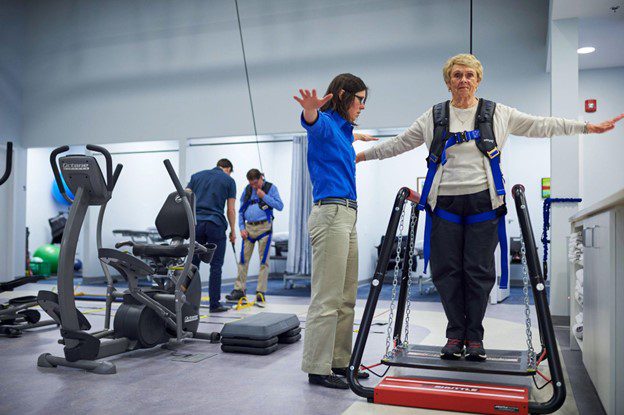
When it comes to balance training, it’s important to progress exercises gradually. Start with simple exercises and gradually increase the difficulty to help prevent injury and ensure your clients are making progress.
For example, you might start with a simple single-leg balance exercise and gradually increase the duration and difficulty. You can also add equipment or dynamic movements to make the exercise more challenging for your patients.
Tip 4: Include Balance Training in Group Fitness Classes
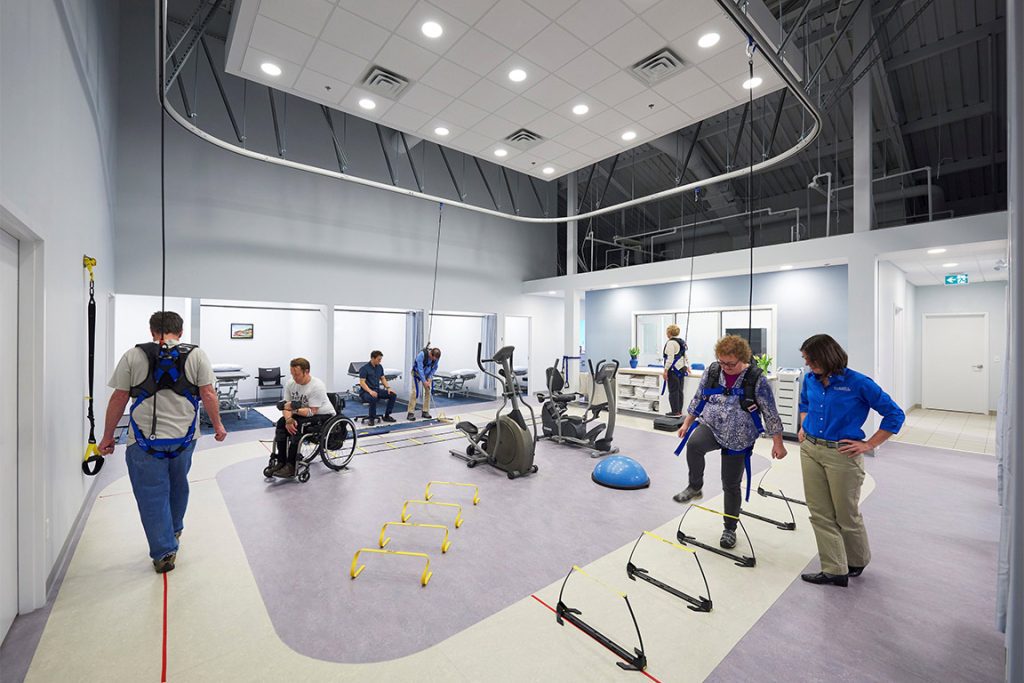
Incorporating group fitness classes can help make balance training more accessible for your clients. Group classes can also provide a social and supportive environment, which can be motivating for your patients!
You can incorporate balance training into a variety of group fitness classes, such as yoga, Pilates, or even a boot camp-style class. Think outside the box to keep your clients engaged and challenged!
Tip 5: Encourage Consistency and Practice
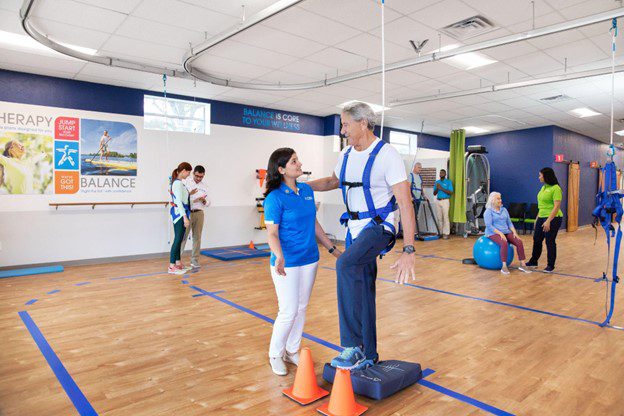
Finally, it’s important to encourage your patients to practice balance training consistently. Consistency is key while trying to improve balance, and practicing balance exercises regularly will help build strength and stability. Encourage your clients to practice balance exercises at home or incorporate them into their daily routine. Remind them that progress takes time and consistency, but with practice, they will see results!
In conclusion, balance training is an essential part of fitness that is often overlooked. Incorporating these five tips into your balance training program will help your clients improve their overall health and fitness while preventing injury. Remember to start with a balance assessment, incorporate equipment, progress exercises gradually, include balance training in group fitness classes, and encourage consistency and practice. With these tips, you can create a well-rounded and challenging balance training program that will help your clients achieve their balance goals.